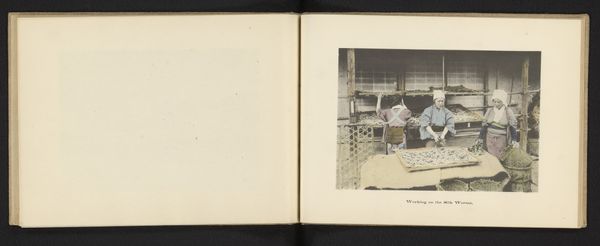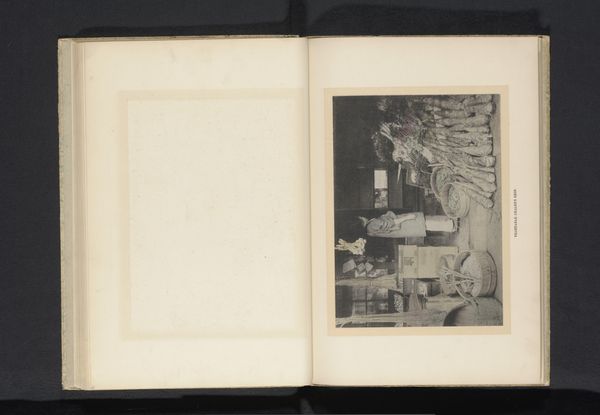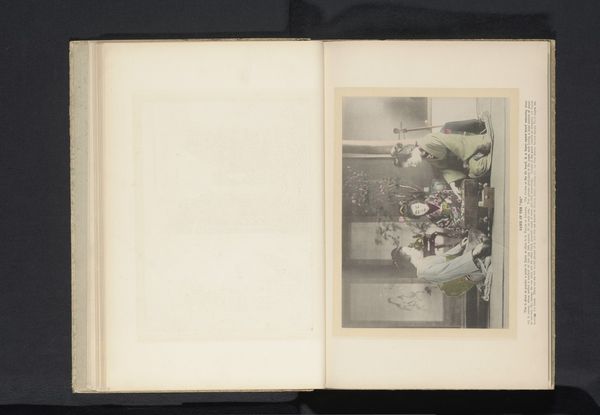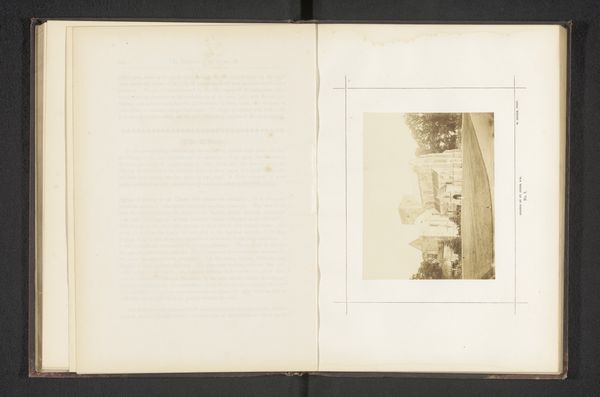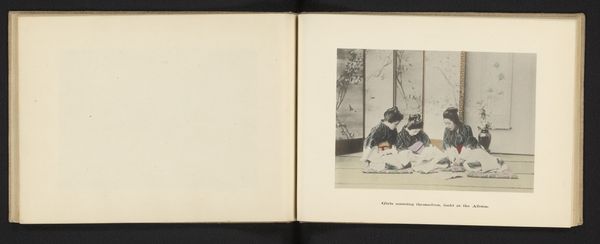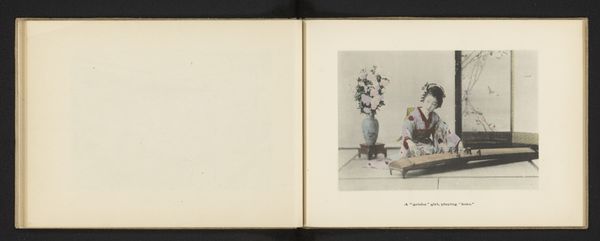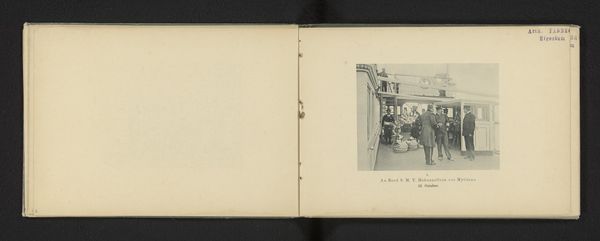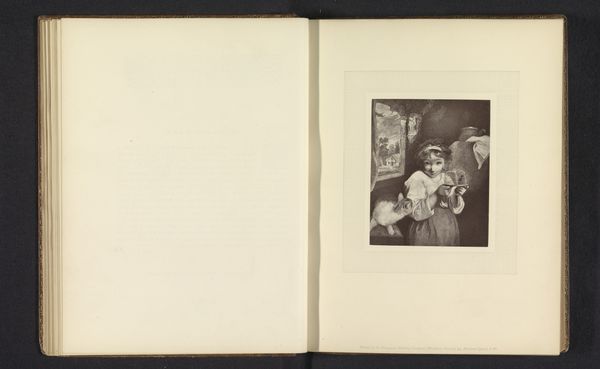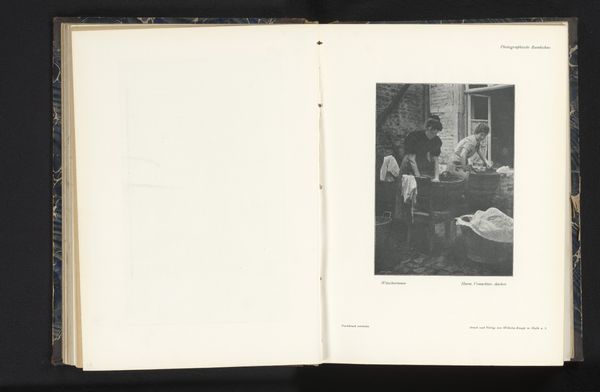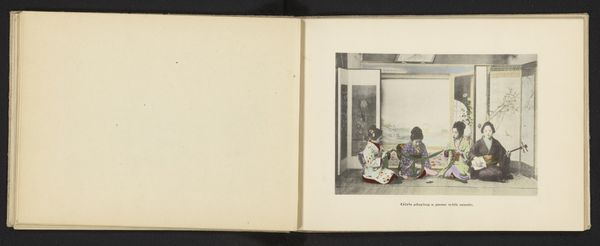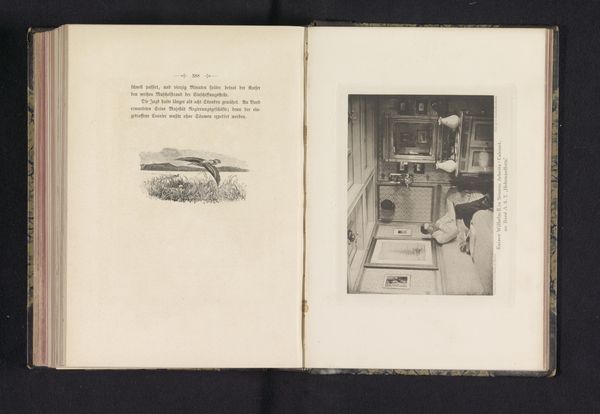
Drie geisha's en twee mannen dansen en maken muziek in een theehuis in Japan c. 1896 - 1906
0:00
0:00
photography
#
asian-art
#
photography
Dimensions: height 105 mm, width 151 mm
Copyright: Rijks Museum: Open Domain
Curator: This captivating photograph, taken between 1896 and 1906, is titled "Three Geishas and Two Men Dancing and Making Music in a Teahouse in Japan" and is attributed to Kōzaburō Tamamura. The piece reflects a blend of photographic portraiture and elements characteristic of Ukiyo-e prints. What strikes you first? Editor: The textured materiality, the hazy, almost painterly quality, given it is a photograph—there is a definite staged feeling as it aims to capture movement and labor in the act of performance, but with a definite still framing of photographic practice. Curator: Exactly. Considering the context, Japan was rapidly modernizing during this period. The Meiji era brought increased engagement with the West, influencing art and culture. It seems that the composition plays into Japonisme, inviting western audiences to romanticize aspects of Japanese life, and in particular female forms through genre painting. How do you think the portrayal of gender influences our understanding of this moment in time? Editor: I'm curious about the printing process involved here, the layered textures that we would think of more of as paintings from that period are showing in a print that relies on technological innovations of that period of Japanese development. Also the means and act of representing labour for consumption – specifically in light of dance and music, something embodied – shows a transition toward a visual, commodified capturing of the cultural output itself. The labor of these geishas and musicians is captured for an audience. Curator: Absolutely, these depictions aren't neutral. The romantic framing can mask the complex realities faced by women within these social structures. What appear as vibrant depictions of performance contain a degree of enforced entertainment—with economic dimensions. I wonder, to what degree does this image feed into colonial fantasies? Editor: I think in a global economy predicated on visual consumption the photo speaks more to capturing an economy itself rather than a specific subject matter. While historical frameworks of consumption have their dark colonial histories, I am particularly attuned to thinking about what such an image enables for our understanding of how labor itself and it’s depiction evolves. Curator: I see that tension clearly. It offers a visual record while also hinting at economic undercurrents of both exploitation and empowerment of that moment. It helps to investigate the nuanced complexities involved in this piece, and that in the making we reflect further. Editor: Agreed, indeed seeing that complexity enriches this glimpse of performance—as product of art.
Comments
No comments
Be the first to comment and join the conversation on the ultimate creative platform.
